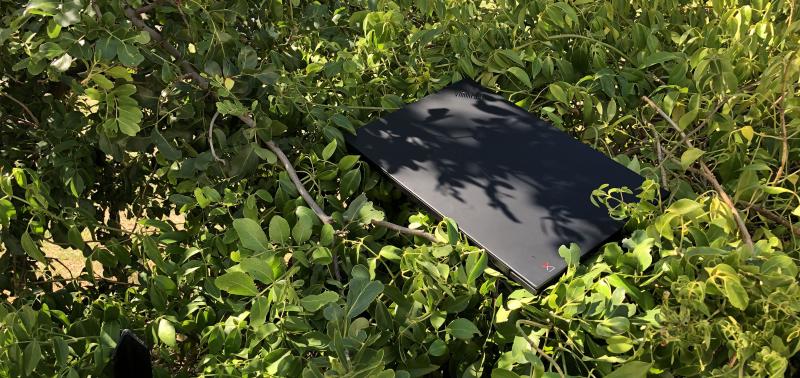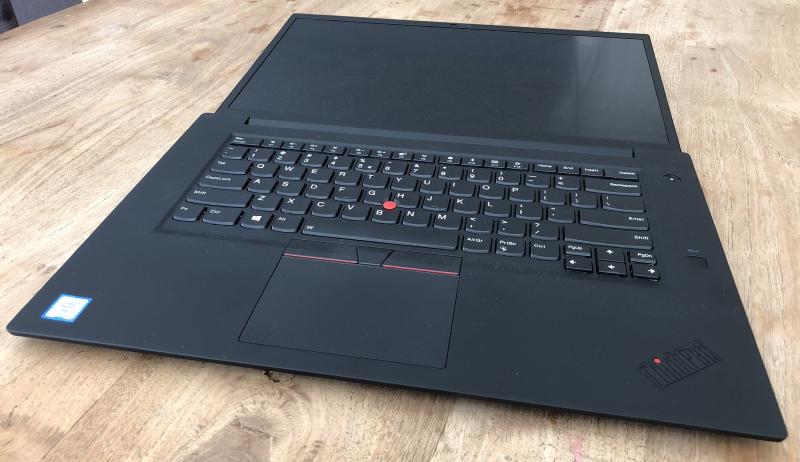WARNING: EXTREME PC hardware-related nerdiness ahead. Read at your own risk.

It is tradition around these parts that the welcoming of new computer machines is celebrated by, amongst many other rituals, a sometimes incomprehensible amount of customisation-related labour and a mention (or two) in these pages.
Some examples from the past include:
- Hacking Radeon suspend / resume support into the Linux kernel and the X-Server in 2002, so that my cheap clone laptop could too.
- Acquiring my first name-brand laptop (HP NC6000) in 2004, with a whole gigabyte of RAM.
- My first dual-core laptop in 2006.
- Reviewing Ubuntu Feisty on above-mentioned laptop led to, as far as I can remember, my first really popular post, with about 50k visitors in a few days.
- Relatively low-key announcements during my macOS phase, starting with the 2015 MacBook Pro and then later the 2017 MacBook Pro on my birthday in 2017.
Well folks, this post exists because on Tuesday, April 17, 2019 I became the new owner of a Lenovo ThinkPad X1 Extreme.
This new device, just like all the previous ones, took up a considerable amount of mental cycles before, during and after its acquisition.
This does make sense: It’s the technical artefact I use for a large part of the day to interface with and shape the universe around me. This shaping is how I try to create value, so the main physical tool I used for this should be as sharp as possible.
So, tell me, why did your somewhat stylish MacBook phase have to come to an end?
It seems like just the other day when my mysterous employer bought me that shiny 2017 top-of-the-line(ish) MacBook Pro.
They grow up so fast!
… at which point they summarily have to be replaced by a slightly different and hopefully more effective new thing.
The virtual machines I have to use for some of my projects caused the 16GB 2.9GHz 2017 MacBook Pro to grind to a halt once too often.
I evaluated upgrading to the 2018 model with 32GB RAM and the 8th generation i7, but the disappointing keyboards on the current MacBook Pro range made it even trickier than usual to justify the substantial price of the upgrade.
The MacBooks are stellar machines, but only if you can look past the keyboard.
To add to that, after five years of macOS, it was time to check that I was still able to work just as efficiently with The Other desktop operating systems.
Why did you decide to get the ThinkPad X1 Extreme?
When you go searching for laptop workstations that are in the same class as the 15" MacBook Pros, one of the main candidates is the ThinkPad X1 Extreme, which, to my delight, was straight-forward to obtain from my favourite local supplier!

(Interestingly, the price down here in ZAR is better than the dollar price on Amazon directly converted to ZAR. This is usually the other way round.)
I made a deliberate choice for the version with the FullHD screen, and not the 4k multi-touch panel.
“WHAT? ARE WE BACK IN THE 1990s?!!” you might ask, tapping away on your high-resolution touch device with its beautiful screen and superb battery life.
During the 1.5+ years of using the 15" MacBook Pro, with one of the most beautiful screens in the business, I very rarely used that screen. Furthermore, when mobile, the significantly longer battery life of the FHD version, along with the slightly reduced weight, are more important.
Along with the 6-core 8750H i7 CPU, 16GB of RAM and 512GB of SSD ThinkPad, I ordered an additional 1TB Samsung EVO Plus 970 NVMe SSD and an additional 16GB RAM module.
One simply unscrews the bottom panel to reveal two accessible DIMM slots, and two accessible M.2 SSD slots. I added the extra drive and extra RAM, put the panel back, and booted up to a pretty sweet upgrade.
(Both drives are in the gigabytes per second read and write class. The built-in WDC PC SN720 SDAQNTW-512G-1001 is only slightly slower than the Samsung 970.)
It’s good to know that I will be able to upgrade the RAM to 64GB, and the storage to multiple terabytes of SSD, should that become necessary, or should I be able to fabricate some or other good reason for this in the future.
Pro-tip: Beware duplicate volume IDs when you clone a drive.
I used the free Samsung Drive Migration Software for Consumer SSD tool to image the factory-install of Windows to the new 1TB Samsung SSD.
After this, I simply changed the boot order in the BIOS (which also swaps C: and D:, oh Windows!, and Bob was my uncle.
OR WAS HE?!
Only later when diagnosing why the Windows indexer was not picking up any new files from my drive, did I figure out that the duplicate volume IDs on the drives was confusing it.
Even later, after I had almost forgotten about the volume IDs, I had huge fun fighting with the Windows boot loader simply giving up after an Ubuntu install.
You won’t guess what the issue was, or will you?
What are your first impressions?
Although it feels lighter than the MBP, the laptop is thicker and slightly bigger than the MBP. Due to the shape of the chassis, and especially the ventilation rib on the bottom, it feels good in the hand.
The fans do come on quite easily in Windows, which can be disturbing. There are fortunately a number of configuration options to ameliorate this issue.
The Linux support for this laptop is quite good. After a few hours of Manjaro (I’ve always wanted to see what an Arch-derivative was like), I installed Ubuntu 19.04.
With minimal tuning, I can get the idle power consumption (with Emacs running of course) down to about 7W.
This would in theory give me 10 hours of staring at Emacs, which is epic.
(Shortly after getting the laptop, I had to invest a not inconsiderable number of hours into fine-tuning my Emacs configuration for Windows. Although Emacs on Linux is still the ultimate experience, Emacs on Windows comes close enough. For now.)
Probably due to the reduced weight and due to the laptop being able to keep itself cool much more easily, the laptop fares significantly better than the 15" MacBook Pro in the official Working in Bed and also Flipping Out Your Laptop To Do Something Real Quick tests.
Other than that, features like the way the BIOS unlocks both hardware-encrypted SSDs at boot using my fingerprint, are really quite neat.
Do you have anything else to say?
No.